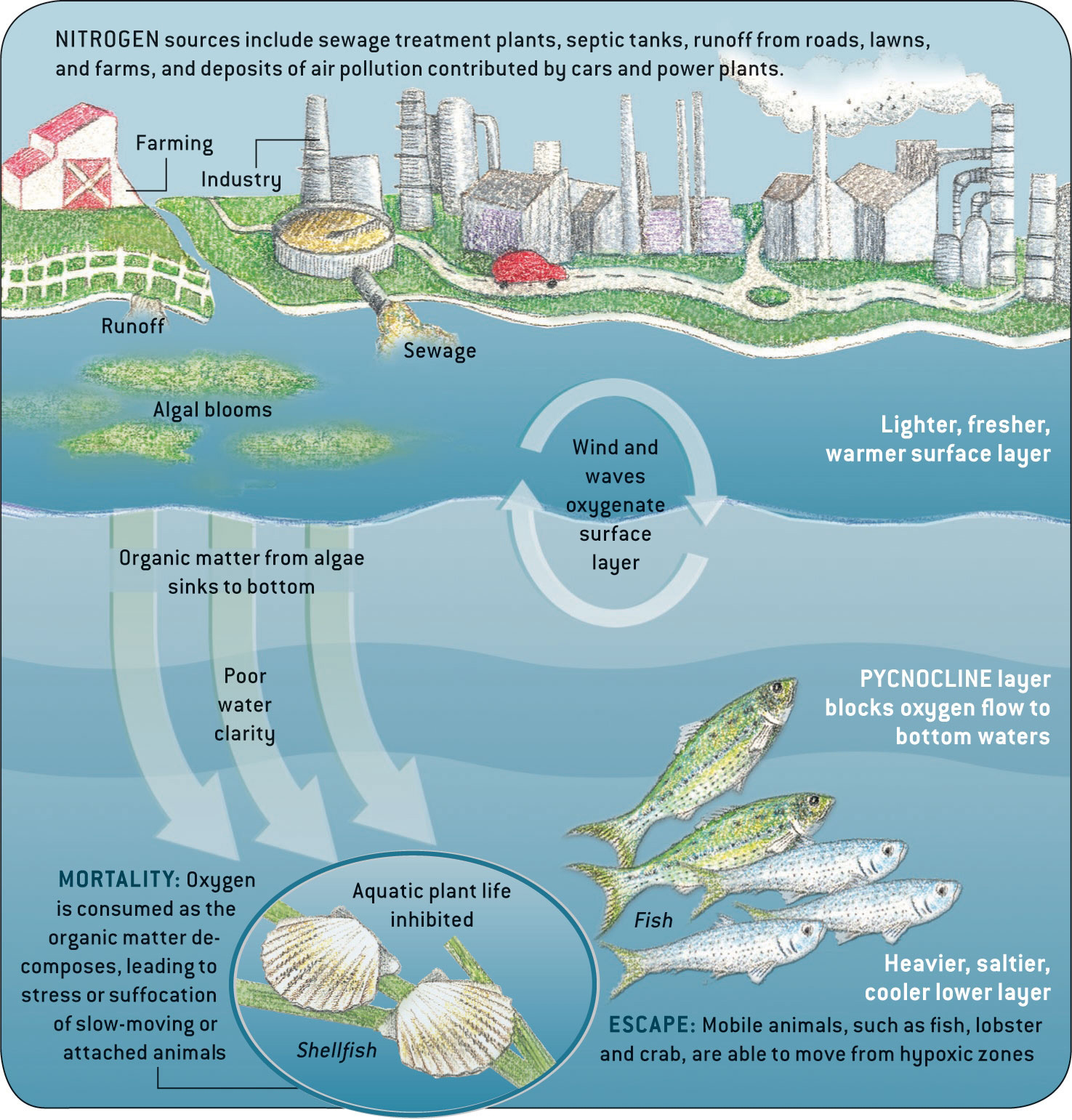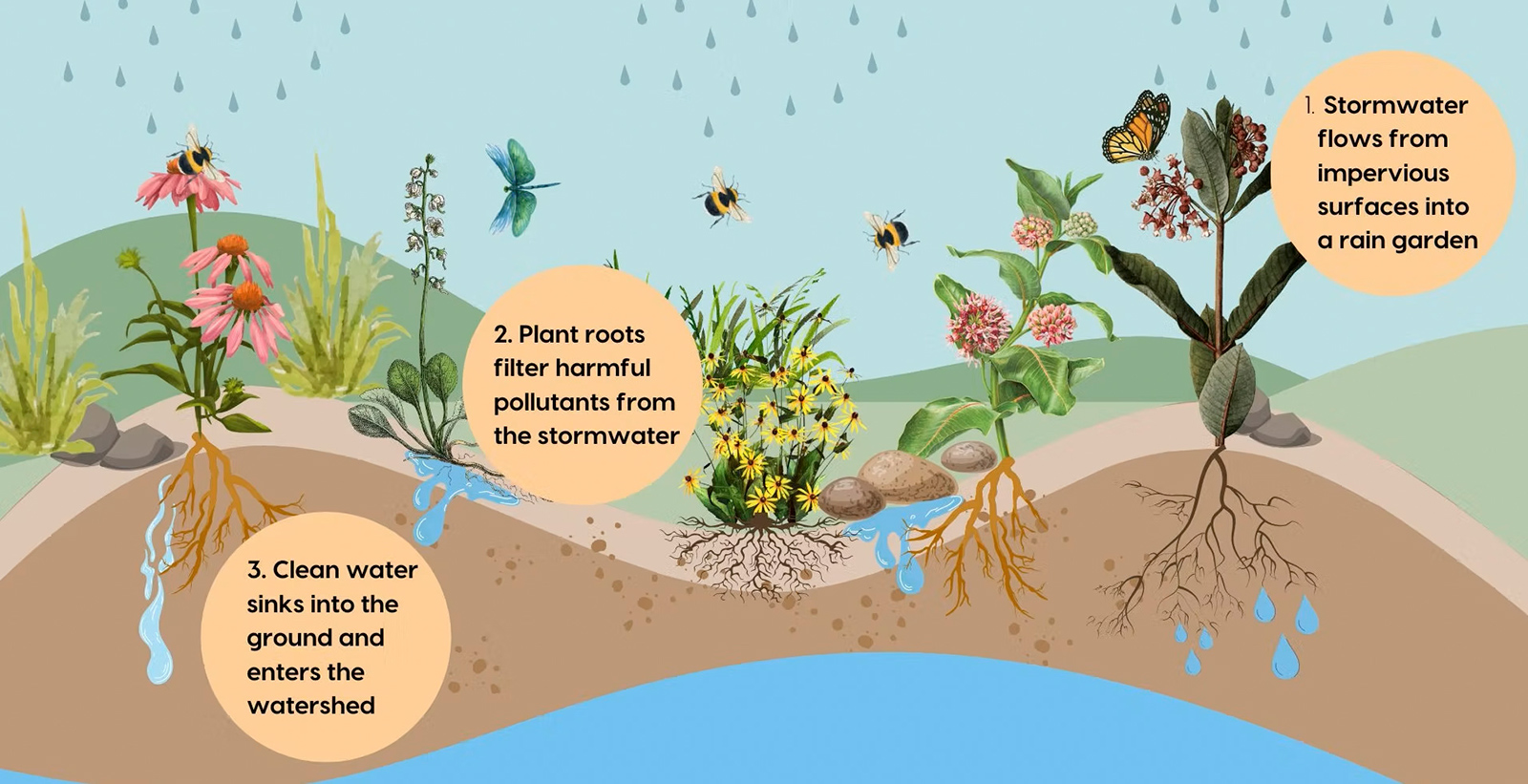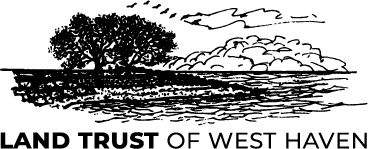Human Impact
The 19th century saw Long Island Sound transform into a recreational haven, with destinations like the Savin Rock Amusement Park attracting visitors to West Haven’s shoreline. Although the park was demolished in 1968, its legacy endures in conservation efforts such as the 2007 Savin Rock Shorefront Conservation Easement, which permanently protects 39 acres of shoreline, including what is now Eco Park! Today, millions of people visit the Sound annually for swimming, boating, and wildlife viewing, contributing to a vibrant regional economy. However, these activities, alongside urbanization and climate change, pose challenges that require a balanced approach to protect the Sound’s future.
The Sound’s Health: Challenges and Successes
Long Island Sound’s ecosystems are home to a vast array of wildlife, supporting more than 1,200 species of invertebrates, 170 species of fish, and dozens of migratory bird species. However, human activity has significantly impacted its health. Pollution, habitat destruction, and the effects of climate change threaten the delicate balance of this estuary, even as ongoing conservation efforts yield improvements.
Nitrogen Pollution and Water Quality
Excess nitrogen from wastewater and stormwater runoff is one of the most significant threats to the Sound. Algae can multiply quickly in water with an overabundance of nitrogen and phosphorus, particularly when the water is warm and the weather is calm. Algal blooms deplete oxygen in the water when they decompose and create hypoxic conditions (a state of low oxygen levels) that threaten fish and shellfish. Recognizing this, the Connecticut Department of Energy and Environmental Protection (CT DEEP), New York State Department of Environmental Conservation (NYSDEC), and the United States Environmental Protection Agency (USEPA) developed a Total Maximum Daily Load (TMDL) for nitrogen in the 1990s. This initiative resulted in more than $2.5 billion invested in wastewater treatment upgrades, reducing nitrogen discharges by 47 million pounds annually. Despite these successes, nonpoint source pollution from stormwater and agricultural runoff remains a significant challenge, requiring continued efforts to manage these diffuse sources.
Hypoxia and Beach Closures
Each summer, hypoxic zones develop in the western and central Sound, impacting marine life and reducing biodiversity. In addition, pollution from untreated sewage and runoff often leads to beach closures, underscoring the need for robust infrastructure and public awareness campaigns to address these issues.

Source: Long Island Sound Study
Key Human Impacts
Sewage
The Sound receives treated wastewater from more than 100 sewage treatment plants, discharging more than a billion gallons daily. Aging infrastructure worsens the problem, with cracked pipes and combined sewer overflows releasing untreated sewage during heavy rain events. Private septic systems also contribute to pollution, leaking nitrogen and harmful bacteria into groundwater and waterways. These pollutants degrade water quality, harm marine ecosystems, and pose public health risks, particularly during periods of heavy rainfall.
Trash and Marine Debris
Marine debris, especially plastics, is a widespread problem in Long Island Sound. Single-use plastics, such as bags, bottles, and straws, often end up in the water, where they can harm wildlife. Sea turtles, fish, and birds may ingest or become entangled in plastic waste, leading to injury or death. Abandoned fishing gear, known as “ghost gear,” also poses a significant threat, continuing to trap marine life long after being discarded. In addition to ecological harm, littered beaches and polluted waters diminish the Sound’s appeal as a recreational and tourism destination.
Stormwater Runoff
Urbanization has led to an increase in waterproof surfaces like roads and parking lots, which prevent water from soaking into the ground. During storms, rainwater flows over these surfaces, picking up pollutants such as oil, fertilizers, pet waste, and trash, and depositing them directly into the Sound. This runoff not only degrades water quality but also contributes to flooding and erosion. Green infrastructure solutions, such as rain gardens, bioswales, and permeable pavements, offer effective strategies for managing stormwater and reducing its impacts.

Source: Save the Sound
Taking Action: What You Can Do
Protecting Long Island Sound is a shared responsibility that encompasses individual actions as well as community and state-level decisions. Here are steps you can take to make a difference:
- Reduce Pollution in Your Neighborhood:
- Dispose of pet waste properly to reduce bacteria and nutrient pollution.
- Join the Canines for Clean Water campaign and spread the word to your dog-loving friends!
- Keep storm drains clear of debris and never dump hazardous materials, such as motor oil or paint, into storm drains: Adopt a Drain
- Become A Pollution Watchdog – Alert the local authorities to any leaks, overflows, illegal dumping, or other water pollution issues.
- Adopt Green Infrastructure:
- Install rain barrels at home to collect and reuse stormwater.
- Plant native vegetation to absorb and filter runoff.
- Use permeable pavements for driveways and walkways to allow water to seep into the ground rather than running off into the Sound.
- Encourage your municipality to consider establishing a Stormwater Utility.
- Reduce Plastic Use:
- Opt for reusable bags, bottles, and utensils to decrease single-use plastic waste.
- Participate in local recycling programs.
- Advocate for policies that reduce the production and distribution of single-use plastics.
- Join Cleanup Efforts:
- Volunteer for coastal cleanups or organize community cleanup events: Join the Connecticut Cleanup, Remove Marine Debris
- Keep garbage bags or a bucket handy so you can remove trash from the beaches and parks you visit.
- Maintain Septic Systems:
- Schedule regular inspections and pumping to prevent leaks and failures.
- Upgrade outdated systems to improve efficiency and reduce nitrogen pollution.
- Support Local Efforts:
- Advocate for municipal investments in stormwater management infrastructure.
- Participate in local habitat restoration and conservation projects to improve biodiversity and resilience.
Landscaping for a Healthier Sound
Your yard and garden can play a significant role in protecting Long Island Sound. Thoughtful landscaping practices help manage runoff, reduce pollution, and support native species:
- Plant Native Plants:
- Choose native trees, shrubs, and flowers that are adapted to local conditions and require no fertilizer and less water. See Native Plants Page
- Include plants like milkweed and goldenrod to support pollinators such as bees and butterflies. See Pollinators Page
- Reduce Lawn Areas:
- Convert sections of your lawn into native wildflower meadows or rain gardens.
- Reduce mowing frequency to allow natural vegetation to thrive and absorb runoff.
- Use Mulch and Ground Covers:
- Apply mulch in garden beds to retain soil moisture and prevent erosion.
- Use ground covers to stabilize soil on slopes and minimize bare areas.
- Capture and Reuse Rainwater:
- Install rain barrels to collect water from gutters and use it for irrigation.
- Direct downspouts toward garden beds or permeable areas to reduce runoff.
- Limit Chemical Use:
- Avoid synthetic fertilizers and pesticides that can harm aquatic ecosystems.
- Opt for organic or slow-release alternatives and apply sparingly.
By working together, we can protect the health of Long Island Sound and ensure its vitality for generations to come.
Resources for a Healthier Sound
Sound Ideas for Clean Water | Long Island Sound Study – A comprehensive guide with tips and resources for reducing pollution and protecting water quality.
NEMO (Nonpoint Education for Municipal Officials) | UConn CLEAR – Educational resources for municipalities on managing stormwater and implementing green infrastructure.
Trash Free Waters | US EPA – A program focused on preventing and reducing marine debris through community involvement and education.
Long Island Sound Marine Debris Action Plan | NOAA – A strategic framework addressing the impacts of marine debris through 2027.
Sound Health Explorer – An interactive tool to monitor water quality, hypoxia, and other environmental conditions in the Sound. Use it to find out how healthy your beach is.
Reduce Runoff | Save the Sound – A source of information about stormwater management best practices along with individual and community-level solutions.
Pet Waste Pollutes – Long Island Sound Study – Join efforts to promote responsible pet ownership.
